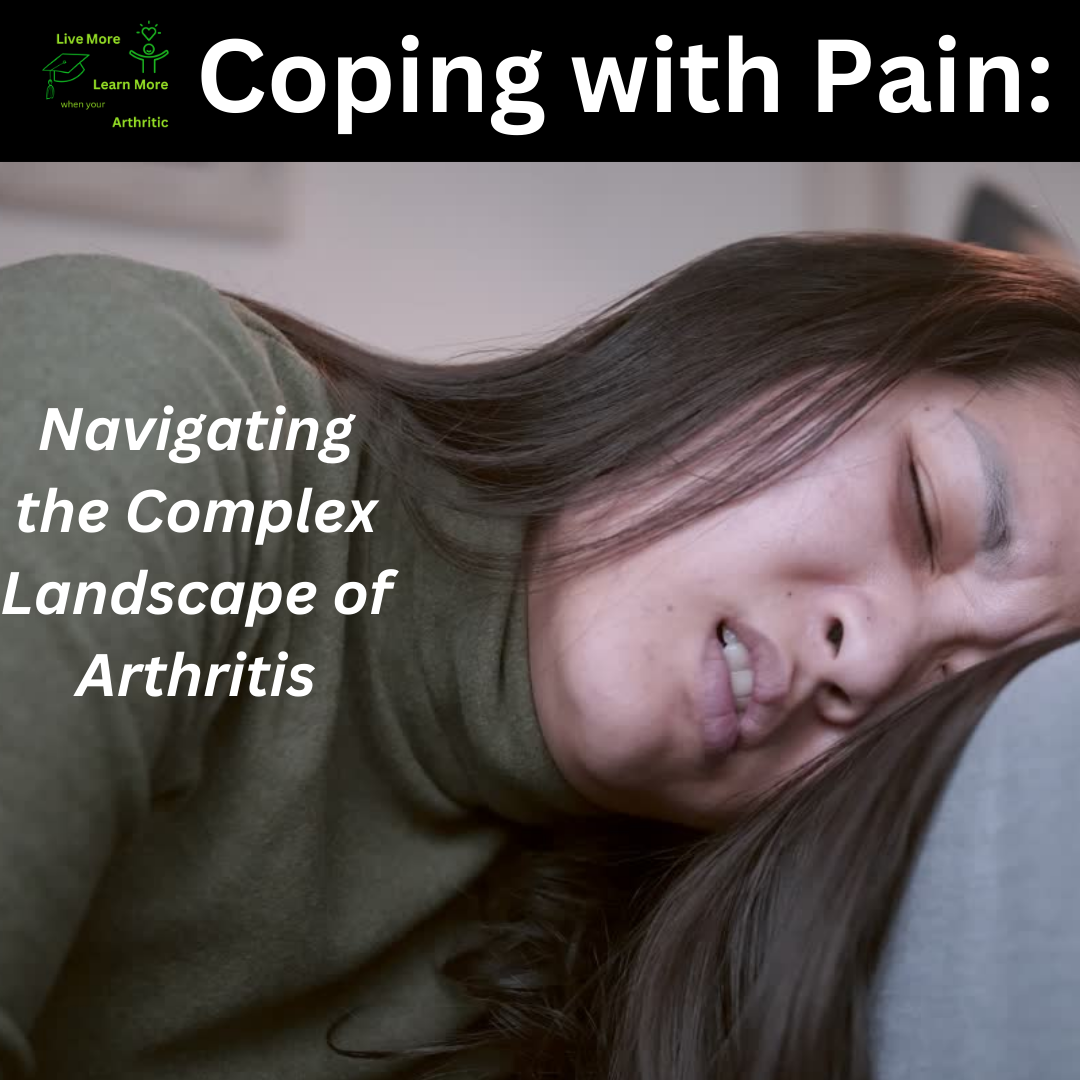
Coping with Pain: Navigating the Complex Landscape of Arthritis
Pain is a pervasive and challenging aspect of arthritis, impacting individuals physically, emotionally, and mentally. Coping with arthritis-related pain involves a multifaceted approach that encompasses medical interventions, lifestyle adjustments, and psychological strategies. Understanding the complex landscape of pain management is crucial for individuals navigating the intricate journey of living with arthritis.
Arthritis manifests in various forms, each contributing to a distinct experience of pain.
- Inflammatory Arthritis: Characterized by joint inflammation, this type often leads to throbbing or aching pain. Conditions like rheumatoid arthritis (RA) and psoriatic arthritis fall into this category.
- Osteoarthritis: Marked by the degeneration of joint cartilage, osteoarthritis results in a more mechanical pain, often exacerbated by movement. It is commonly seen in older adults and those with joint injuries.
- Neuropathic Pain: This occurs when nerve fibers are affected, leading to sensations of tingling or burning. It is sometimes seen in conditions like RA due to nerve compression or damage.
Medical Interventions for Pain Management
Medical interventions play a pivotal role in addressing arthritis-related pain. Commonly prescribed treatments include:
- Nonsteroidal Anti-Inflammatory Drugs (NSAIDs): These help reduce inflammation and alleviate pain. Examples include ibuprofen and naproxen.
- Corticosteroids: These are used for their potent anti-inflammatory effects. They can be taken orally or injected directly into the joints.
- Disease-Modifying Antirheumatic Drugs (DMARDs): Used to slow the progression of inflammatory arthritis, DMARDs like methotrexate are essential in managing conditions like RA.
- Biologic Therapies: These target specific inflammatory pathways and are used in more severe cases. Examples include TNF inhibitors like adalimumab.
- Analgesics: Medications such as acetaminophen are used to relieve pain without affecting inflammation.
Physical Therapy and Exercise
Physical therapy and tailored exercise regimens contribute significantly to pain management.
- Physical Therapy: Techniques employed by physical therapists improve joint flexibility, strengthen supporting muscles, and enhance overall function.
- Low-Impact Exercises: Activities such as swimming, cycling, and walking minimize joint stress while maintaining physical fitness. Regular physical activity helps release endorphins, the body’s natural painkillers.
Lifestyle Adjustments and Joint Protection
Adapting daily routines and making lifestyle adjustments are integral components of coping with arthritis pain.
- Joint Protection Strategies: Avoiding repetitive movements, maintaining proper posture, and using assistive devices can reduce strain on joints.
- Ergonomic Modifications: Changes to the home and workplace, such as using ergonomic chairs and tools, contribute to minimizing physical stress on affected joints.
Psychological Strategies for Pain Coping
The psychological impact of arthritis-related pain is substantial, affecting mood, sleep, and overall well-being. Employing psychological strategies is crucial for effective pain coping.
- Mindfulness-Based Techniques: Practices like meditation and guided imagery can reduce pain perception and improve mental health.
- Cognitive-Behavioral Therapy (CBT): This helps individuals reframe negative thought patterns and develop effective coping mechanisms, enhancing their ability to manage pain.
Supportive Therapies
Complementary and supportive therapies complement conventional approaches to pain management.
- Acupuncture: This ancient practice can help alleviate pain by stimulating specific points on the body.
- Massage Therapy: Therapeutic massage can reduce muscle tension and improve circulation, contributing to pain relief.
- Heat/Cold Applications: Applying heat can relax tense muscles, while cold packs can reduce inflammation and numb painful areas.
Medication Management and Side Effects
While medications are essential for pain management, it’s crucial to consider potential side effects.
- NSAIDs: May cause gastrointestinal issues and long-term use could impact kidney function.
- Opioid Medications: Effective in some cases, but come with the risk of dependence and addiction. Balancing pain relief with potential risks is a critical aspect of medication management.
Challenges of Persistent Pain
Persistent pain poses unique challenges, influencing various aspects of daily life.
- Sleep Disturbances: Chronic pain can lead to difficulties in falling and staying asleep.
- Fatigue: Constant pain can be exhausting, leading to overall fatigue.
- Emotional Distress: Chronic pain is often accompanied by anxiety, depression, and emotional distress, requiring a comprehensive approach that addresses both physical and emotional components of pain.
Building a Holistic Pain Management Plan
Individuals coping with arthritis-related pain benefit from building a holistic pain management plan that considers their unique needs.
- Collaboration with Healthcare Providers: Working with rheumatologists, pain specialists, and mental health professionals ensures comprehensive care.
- Regular Communication: Keeping open lines of communication with healthcare providers allows for adjustments to the pain management plan, ensuring its ongoing effectiveness.
Conclusion
Coping with arthritis-related pain is an ongoing journey that necessitates a comprehensive and individualized approach. Integrating medical interventions, physical therapy, psychological strategies, and supportive therapies contributes to effective pain management. Empowering individuals to actively participate in their pain management plan enhances their overall quality of life despite the challenges posed by arthritis.
- “Arthritis Pain and Pain Management.” Arthritis Foundation. Available at: arthritis.org
- “Rheumatoid Arthritis (RA).” Mayo Clinic. Available at: mayoclinic.org
- “Osteoarthritis: Diagnosis and Treatment.” National Institute of Arthritis and Musculoskeletal and Skin Diseases (NIAMS). Available at: niams.nih.gov
- “Physical Therapy for Arthritis.” American Physical Therapy Association (APTA). Available at: apta.org
- “Complementary and Alternative Medicine in Pain Management.” American Society of Regional Anesthesia and Pain Medicine (ASRA). Available at: asra.com
- “Managing Chronic Pain.” American Psychological Association (APA). Available at: apa.org
- “Medications for Arthritis.” WebMD. Available at: webmd.com
- “Holistic Pain Management for Arthritis.” Harvard Health Publishing. Available at: health.harvard.edu

